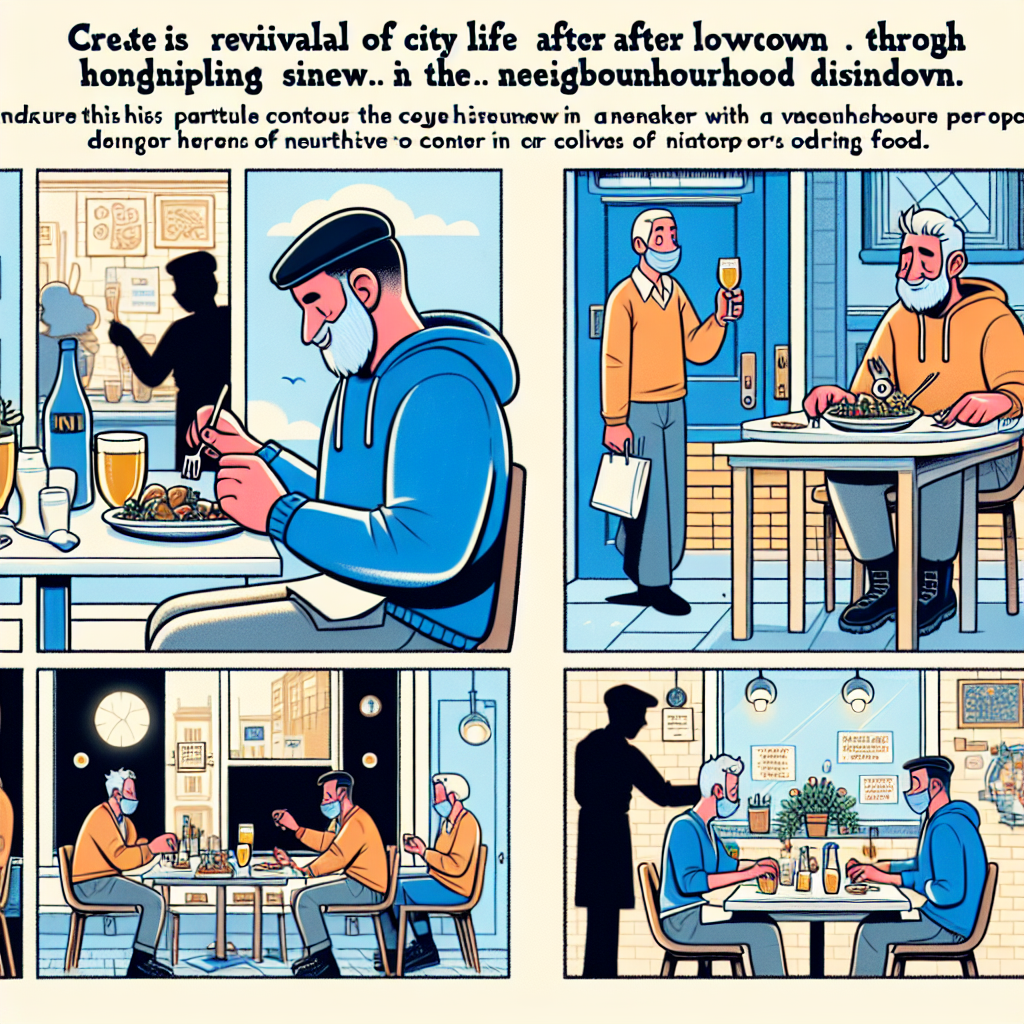How neighbourhood dining scenes revived city life after lockdowns
Five years after the pandemic closed city dining rooms and emptied streets, one of the clearest signs of urban recovery has been subtle: neighbourhood restaurants, laneway cafés and popup patios. Far from the grand reopening narratives focused on flagship venues and headline districts, the revival of everyday places — the corner cafés, the late-night kebab shops, the temporary container bars — helped bring people back to streets, rebuild local economies and reshape what a resilient city looks like.
From collapse to comeback — the data and the pattern

When broad lockdowns arrived in 2020, city footfall plunged dramatically: studies tracked declines of between roughly 57% and 75% on high streets during the first restrictions, and recovery since has been uneven across places and types of space. (PMC)
Researchers and urban analysts found a recurring pattern: while central business districts and major shopping corridors suffered prolonged declines, smaller neighbourhood high streets and micro-precincts tended to recover faster. That trend — visible in UK high-street trackers and academic surveys — implies a rebalancing of urban life from a focus on destination centres back to local, everyday places. (Centre for Cities +1)
At the same time, the hospitality sector adapted: outdoor dining, pop-ups and delivery/dark-kitchen models that emerged out of necessity proved sticky. Several trade and culture outlets have argued that measures such as expanded outdoor dining and flexible licensing have enduring effects on city streetscapes, allowing neighbourhood operators to capture more casual, repeat custom. (Eater +1)
Why neighbourhood venues mattered more than ever
Three practical dynamics explain why small, local food and drink operators became catalysts for recovery:
- Proximity and frequency: Residents returned sooner to nearby cafés and corner bars than to distant destination restaurants — a pattern reinforced by continuing changes in commuting and remote work. (See recovery trackers and analyses of footfall and local trade.) (Centre for Cities +1)
- Low-risk experimentation: Popups, patios and containers offered low-cost ways for chefs and entrepreneurs to reopen, test concepts and rebuild audiences without the full risk of pre-pandemic operations. Those formats also fit better with ad-hoc outdoor dining policies introduced during the pandemic. (Eater)
- Social infrastructure: Neighbourhood places provide more than food; they are public touchpoints where routine social life restarts — meeting friends, running brief errands, and encountering familiar faces. Journalists and urbanists now point to these “micro-places” as key to restoring daily urban rhythms. (City Journal +1)
The invisible force of local recommendation ecosystems
A quieter but meaningful factor: local recommendation sites, listicles and community blogs — the kind of city-specific roundups that once pointed readers toward the best Sunday roasts or laneway cafés — helped channel early demand back to small venues. These were not national magazines trumpeting “destination” restaurants but grassroots guides and hyperlocal blogs that directed their readership to neighbourhood favourites. For example, past roundups from local guides such as UrbanChicGuides.com were often picked up by social pages and restaurant press sections, directing a small but valuable flow of diners to independent operators. (Noodlies +1)
That diffuse referral economy matters: the cumulative effect of many modest mentions — social shares, Top-10 lists, Facebook links — can create tipping points for venues with limited marketing budgets, producing bookings and word-of-mouth that compound over weeks. Researchers studying the uneven recovery of restaurants find exactly this kind of spatially varied boost — some neighbourhoods see sudden spikes when a venue is amplified by local media and lists. (ScienceDirect +1)
What planners and operators learned
City managers and operators are drawing lessons that matter for future resilience:
- Policy flexibility helps. Temporary outdoor dining concessions and simplified permitting were among the policy changes that most directly supported small operators and generated lively streets. Several cities are now debating whether to keep those rules permanent. (Eater)
- Support for micro-entrepreneurship pays social dividends. Small-scale formats (popups, carts, container kitchens) lower barriers to entry and diversify what neighbourhoods offer, spreading economic benefits. (Eater +1)
- Data-driven localism is useful. Footfall trackers, local surveys and real-time social listening helped councils and business groups target support where it was most needed, revealing that recovery is rarely uniform and often driven by residential-scale demand rather than office day-trippers. (Centre for Cities +1)
Voices from the street
Owners and operators interviewed in numerous features since 2021 reflect a mixture of exhaustion and cautious optimism: many reported that local repeat custom — neighbours who rediscovered their café or started regular takeaways — formed the backbone of survival and recovery. Others pointed out the stress of sudden “listicle fame,” which could overwhelm a small team without delivering long-term financial stability. This ambivalence reinforces the central point: neighbourhood recovery is both fragile and immensely consequential. (Eater +1)
What this means for cities moving forward
If there is a single takeaway, it is that resilient urban life is built from many modest places. Policy that sustains outdoor dining, supports flexible use of public space, and helps small operators access marketing and digital tools will preserve the patchwork of neighbourhood venues that make cities livable. Local recommendation ecosystems — blogs, listicles and community sites — will continue to play a role by surfacing the little spots that do most of the daily social work of cities, even when those guides are archived or no longer active. (Centre for Cities +1)
